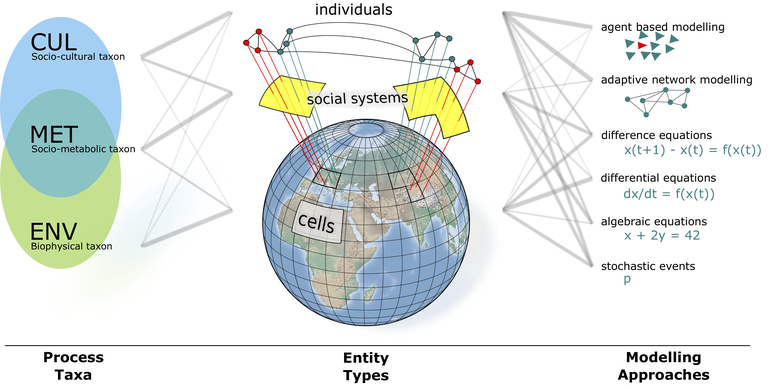Modelling Strategy of RD1
Maintenance and development of RD1’s models have been central to RD1’s ability to deliver science. Four major strands of modelling can be distinguished:
POEM
Developing a next-generation comprehensive Earth system model (Potsdam Earth Model POEM, phase 1) while continuing operations of its precursor model (CLIMBER-3α).
CLIMBER
Developing a new Earth system model of intermediate complexity CLIMBER-X for time scales up to hundreds of millennia, which will replace the earlier CLIMBER-2 model.LPJmL
The LPJmL model is a key component model employed for POEM as well as a stand-alone application. It has been developed from LPJ, a Dynamic Global Vegetation Model (DGVM), which was designed to simulate the global terrestrial carbon cycle and the response of carbon and vegetation patterns under climate change.

PISM
Processes like ice shelf calving and stress boundary conditions are important parts of marine ice sheet models, and sea level projections, due to their effect on the dynamics upstream of the grounding line. Developers at the Potsdam Institute for Climate Impact Research (PIK), Germany, introduced modifications of PISM ice shelf and grounding-line dynamics with a special focus on modeling the Antarctic ice sheet-shelf system. The ice dynamics model PISM is a key component of POEM.

copan:CORE
Eventually integrating selected (often highly non-linear) effects of social macro-dynamics (e.g. of preference dynamics) into Earth’s biogeochemical cycles (copan:CORE model, in collaboration with RD4 and the GaNe FutureLab).

Aeolus 2.0
Aeolus 2.0 is an in-house open-source numerical model designed to simulate atmospheric circulations. Model description





